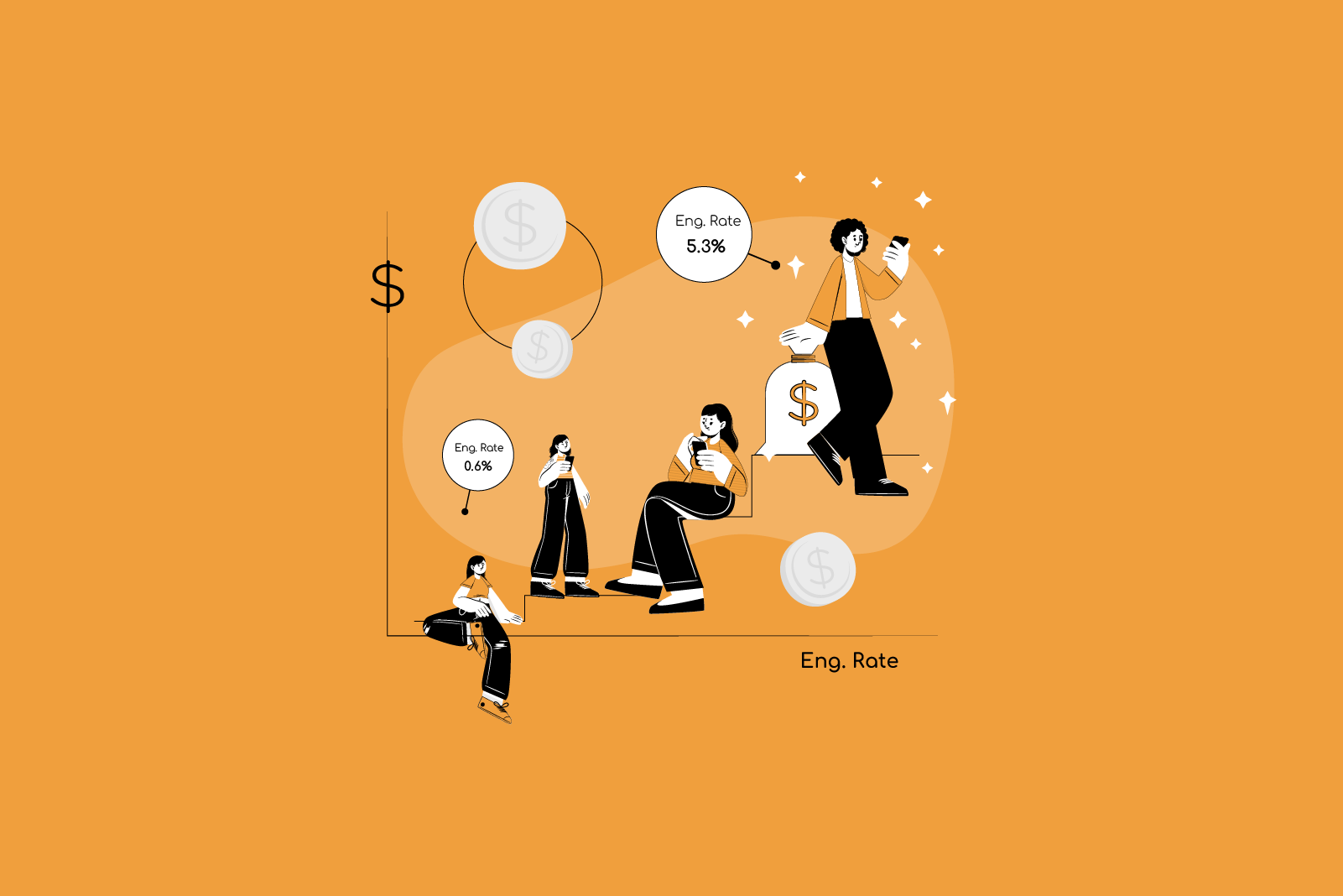
Table of Contents
What has happened to influencer marketing costs over the last few years?
In today’s world, everyone is an influencer, and this may suggest that influencer marketing has reached its saturation point and is no longer as effective.
Marketing with influencer, however, is still going strong. The influencer marketing method continues to be an attractive way for businesses to reach their target audiences, as it is able to target the right audience and generate a higher level of engagement than traditional marketing methods. In addition, influencers allow brands to be showcased in a more genuine and relatable way, which further enhances the appeal of influencer marketing.
There is no doubt that marketers are investing more in influencer marketing today when reading all the reports about its overwhelming phenomenon. According to a survey, 71% of marketers plan to increase their influencer marketing budget in 2020. In 2019, only 57% planned to increase their influencer marketing budget.
The amount of money companies are spending in 2021 is over 13 billion. How are they allocating their budgets? Approximately half of companies spend 20% of their budget on influencer marketing and are willing to invest €40,000 in it.
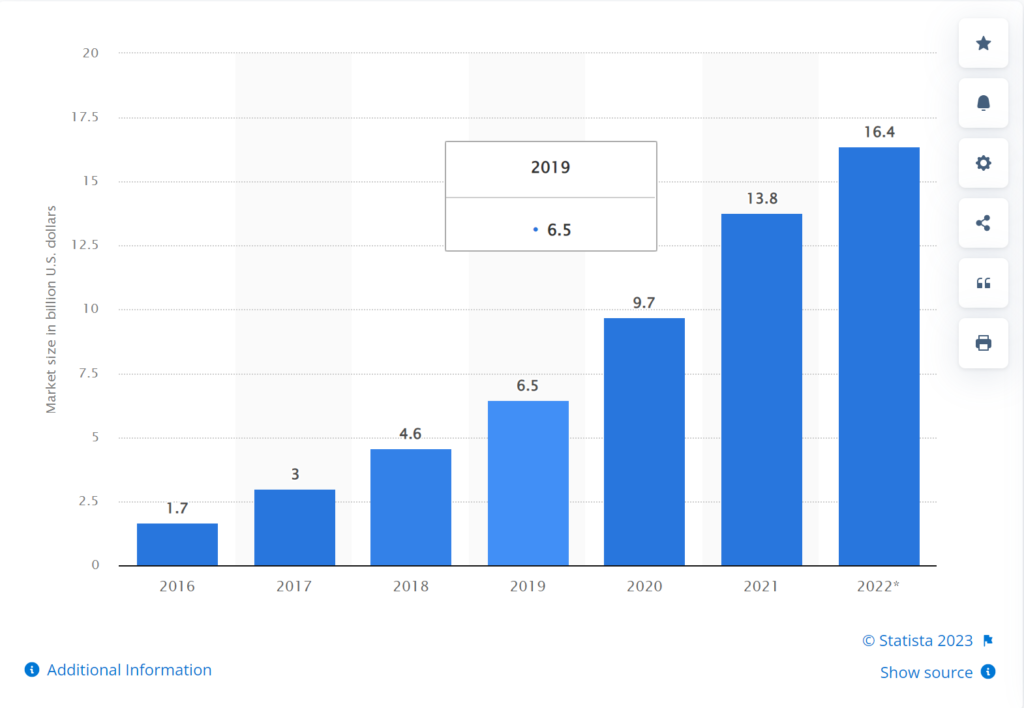
So what are the factors that contributed to this surge in influencer marketing costs?
Increased demand:
As more brands realize the benefits of influencer marketing, the demand for influencers has increased significantly. This has created a competitive market where influencers can charge higher rates for their services and negotiate better deals with brands.
Higher quality:
Influencers are also expected to produce higher quality content that matches the brand’s image and message. This may require more time, effort, and resources from the influencers, such as hiring professional photographers, editors, or assistants. Additionally, influencers may have to comply with certain guidelines or regulations from the brand or the platform, such as disclosing sponsored posts or avoiding controversial topics.
not all influencer campaigns are created equal. If you are not careful, you might end up wasting money on influencers who do not deliver the results you expect. So make sure you ask influencers to provide detailed analytics, cause if you don’t, you’ll end up influen-ced (instead of influencing) and out of pocket!
More platforms:
Influencers are not limited to one platform anymore. They can leverage multiple platforms to reach different audiences and increase their influence. For example, an influencer may have a blog, a YouTube channel, an Instagram account, a TikTok account, and a podcast. This means that they can offer more exposure and value to brands, but also that they have to create more content and manage more accounts.
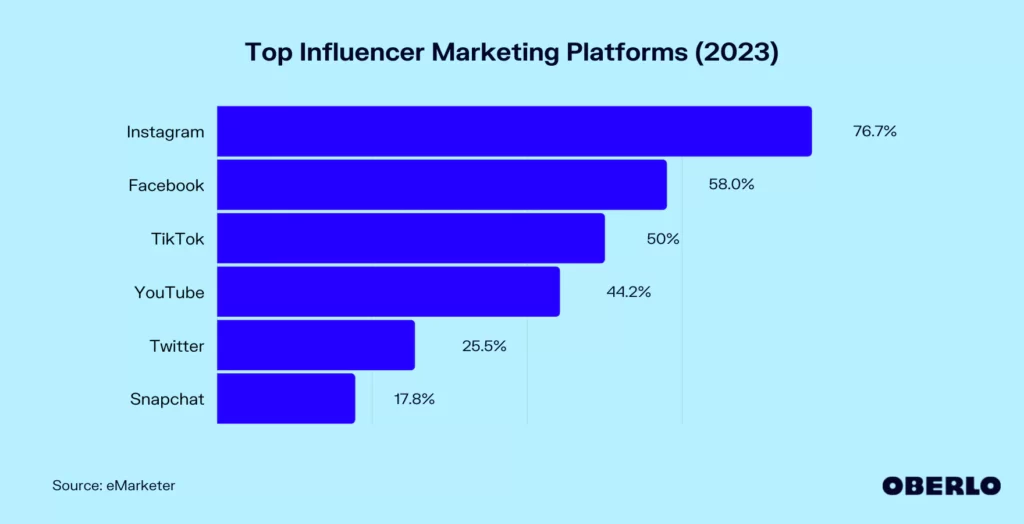
Source: OBERLO
More metrics:
Influencers are also measured by more metrics than just their follower count. Brands are looking for influencers who can generate high engagement rates, conversions, sales, or brand awareness. These metrics are harder to achieve and require more strategy and creativity from the influencers. Moreover, these metrics can vary depending on the platform, the product, and the campaign goals.
influencer marketing costs have exploded due to various factors that reflect the changing landscape of social media marketing. Influencer marketing is still a powerful and profitable way for brands to connect with their customers, but it requires more planning, budgeting, and research to find the right influencers and optimize the results.
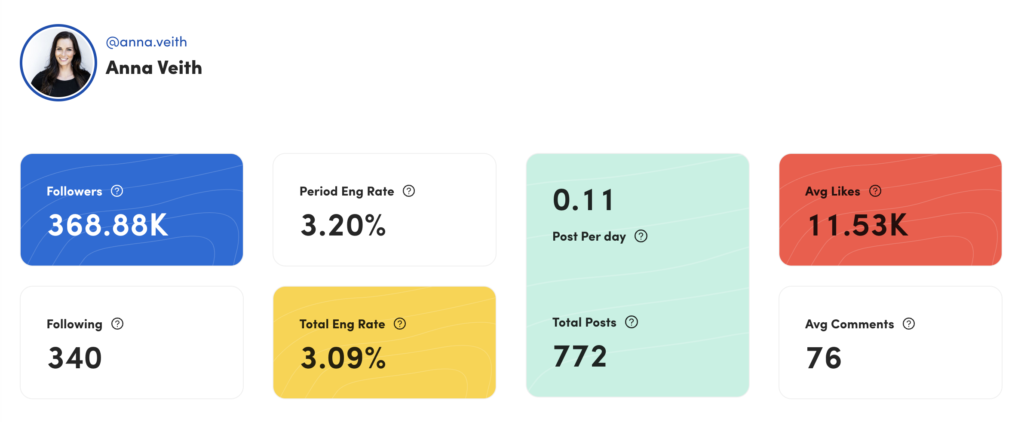
Influencer Marketing: what budget should you invest in your campaigns in 2023?
But how much should you spend on your influencer campaigns in 2023? Here are some factors to consider when planning your budget.
- Your goals and objectives
What are you trying to achieve with your influencer marketing strategy? Do you want to raise awareness, drive traffic, generate leads, or boost sales? Depending on your goals, you may need to invest more or less in your campaigns.
For example, if you want to increase brand awareness, you may need to work with more influencers who have a large and engaged following. If you want to drive sales, you may need to work with fewer influencers who have a high conversion rate and offer incentives such as discounts or giveaways.
- Your industry and niche
What is the average cost per post or per engagement in your industry and niche? Different industries and niches have different rates and expectations for influencer marketing. For example, beauty and fashion influencers may charge more than travel or food influencers. You can research the market rates for your industry and niche by using tools such as Influencer Marketing Hub’s Instagram Money Calculator.
- Your influencer selection criteria
How do you choose the right influencers for your campaigns? What are the criteria that you use to evaluate their suitability and performance? Some of the factors that you may consider are:
- Relevance: How well does the influencer’s content align with your brand’s message and values?
- Reach: How many followers does the influencer have and how many people can they potentially expose your brand to?
- Engagement: How active and responsive are the influencer’s followers and how much do they interact with the influencer’s content?
- Authenticity: How genuine and trustworthy is the influencer and how well do they resonate with their audience?
- Creativity: How original and innovative is the influencer’s content and how well do they showcase your brand’s products or services?
Depending on your criteria, you may need to pay more or less for an influencer’s collaboration. For example, if you value relevance and authenticity over reach and engagement, you may opt for micro-influencers who have a smaller but more loyal and niche audience. If you value creativity and innovation over relevance and authenticity, you may opt for macro-influencers who have a larger but more diverse and mainstream audience.
. Your campaign duration and frequency
How long do you want your influencer campaigns to run and how often do you want to collaborate with influencers?
The longer and more frequent your campaigns are, the more budget you will need to allocate. For example, if you want to run a seasonal campaign that lasts for a few months, you may need to pay more than if you want to run a one-off campaign that lasts for a few weeks. If you want to work with influencers on a regular basis, you may need to pay more than if you want to work with them on a sporadic basis.
- Your campaign measurement and optimization
How do you measure the success of your influencer campaigns and how do you optimize them for better results?
The more data-driven and analytical your approach is, the more budget you will need to invest in tools and platforms that can help you track, analyze, and optimize your campaigns. For example, if you want to measure metrics such as impressions, reach, engagement, clicks, conversions, ROI, etc., you may need to use tools such as Google Analytics, Facebook Pixel, Shopify, etc. If you want to optimize your campaigns based on data insights, feedback, and best practices, you may need to use platforms such as CoCo.
As a general rule of thumb, experts suggest that brands should allocate around 10% of their overall marketing budget to influencer marketing in 2023. However, this may vary depending on your specific goals, industry, niche, criteria, duration, frequency, measurement, and optimization strategies.
The key is to find the optimal balance between quality and quantity, value and cost, and performance and potential when planning your budget for influencer marketing in 2023.
How to Price Your Services as an Influencer: Frequently Asked Questions
If you are an influencer, you might have wondered how to price your services for brands and businesses. How much should you charge for a sponsored post, a story, a video, or a campaign? How do you negotiate with potential clients and justify your rates? In this blog post, we will answer some of the most common questions that influencers have about pricing their services.
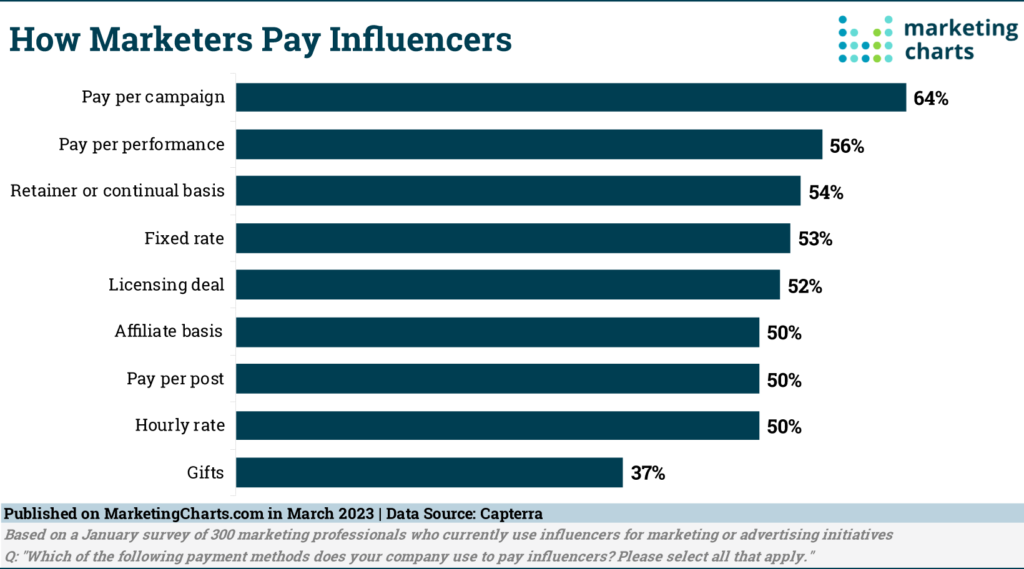
Q: How do I determine my base rate?
Your base rate is the minimum amount that you would accept for a collaboration. It depends on several factors, such as your niche, your audience size and engagement, your content quality and frequency, your reputation and credibility, and your goals and expectations. A simple way to calculate your base rate is to use the following formula:
Base rate = (Average number of views per post x 0.01) + (Average number of likes per post x 0.05) + (Average number of comments per post x 0.10)
This formula gives you a rough estimate of how much value you can provide to a brand per post. You can adjust it according to your specific situation and preferences.
Q: How do I adjust my base rate for different types of collaborations?
Answer:
Your base rate is not fixed. You can increase or decrease it depending on the type and scope of the collaboration. For example, you might charge more for a long-term partnership than a one-time deal. You might charge more for a video than a photo. You might charge more for a product review than a product mention. You might charge more for an exclusive deal than a non-exclusive one. You might charge more for a creative campaign than a standard one.
The key is to communicate clearly with the brand and understand their goals and expectations. You should also consider the value that they offer to you, such as free products, exposure, referrals, or opportunities. You should aim for a win-win situation where both parties are happy with the outcome.
Q: How do I negotiate with brands and businesses?
Answer:
Negotiating with brands and businesses can be challenging, especially if you are new to the influencer industry. Here are some tips to help you negotiate effectively:
- Do your research
Before you approach or respond to a brand, do some background research on them. Find out what their products or services are, who their target audience is, what their marketing objectives are, and what their budget range is. This will help you tailor your pitch and proposal to their needs and interests.
- Be confident and professional
When you communicate with a brand, be confident and professional in your tone and language. Show them that you are serious and reliable, and that you have something valuable to offer them. Avoid using slang, emojis, or informal expressions that might undermine your credibility.
- Be flexible and open-minded
While you should have a clear idea of what you want and what you are worth, you should also be flexible and open-minded to different possibilities and opportunities. Don’t be afraid to ask questions, listen to feedback, and explore alternatives. Sometimes, a brand might offer you something that is better than what you expected or asked for.
- Be respectful and polite
No matter how the negotiation goes, always be respectful and polite to the brand representatives. Don’t be rude, aggressive, or demanding. Don’t take things personally or get emotional. Don’t burn bridges or ruin relationships. Remember that you are representing yourself and your personal brand.
Q: How do I invoice and get paid by brands and businesses?
Answer:
Once you have agreed on the terms and conditions of the collaboration with the brand, you should send them an invoice for your services. An invoice is a document that details the work that you have done or will do for the brand, the amount that they owe you, and the payment method and deadline. You can use online tools or templates to create an invoice easily.
To get paid by brands and businesses, you should choose a payment method that is convenient and secure for both parties. Some of the most common payment methods are PayPal, bank transfer, check, or gift card. You should also set a payment deadline that is reasonable and realistic for both parties. Usually, it is between 15 to 30 days after the invoice date.
You should keep track of your invoices and payments in a spreadsheet or an app. You should also follow up with the brand if they don’t pay you on time or if there are any issues or disputes.
Pricing your services as an influencer can be tricky, but it doesn’t have to be stressful or complicated. By following these tips and answers, you can price your services confidently and fairly, negotiate with brands effectively and professionally, and invoice and get paid smoothly and securely.